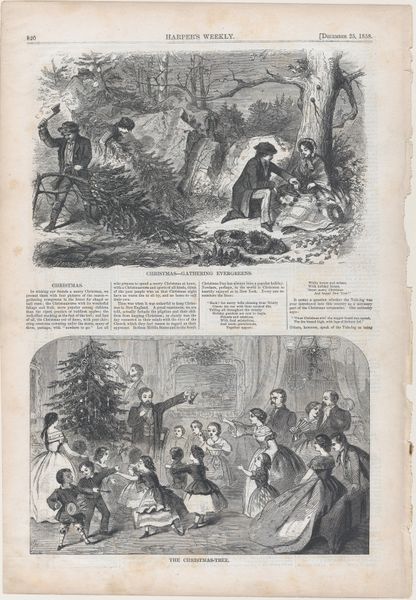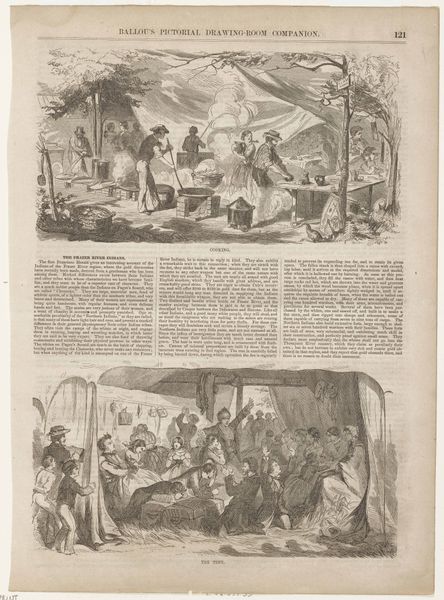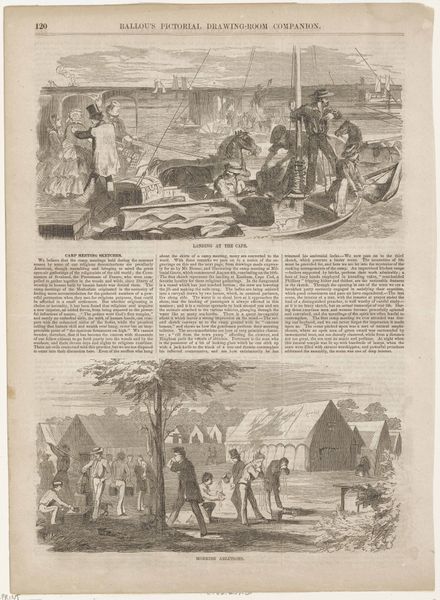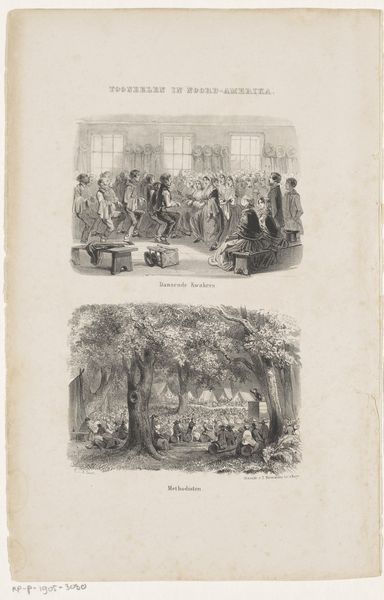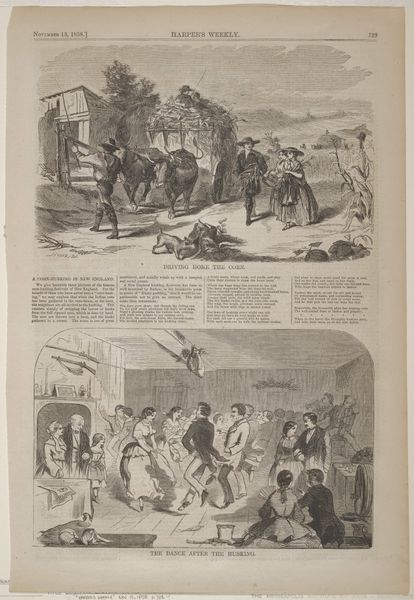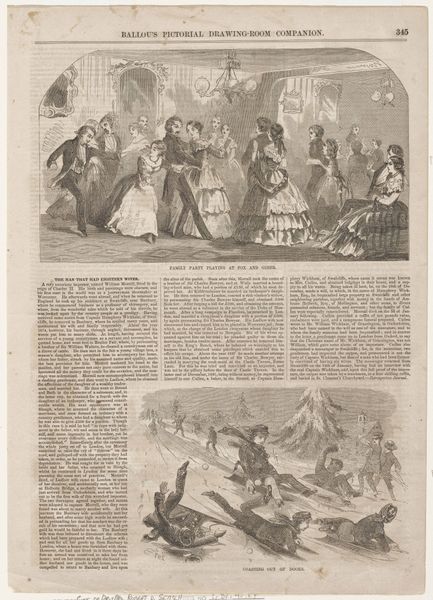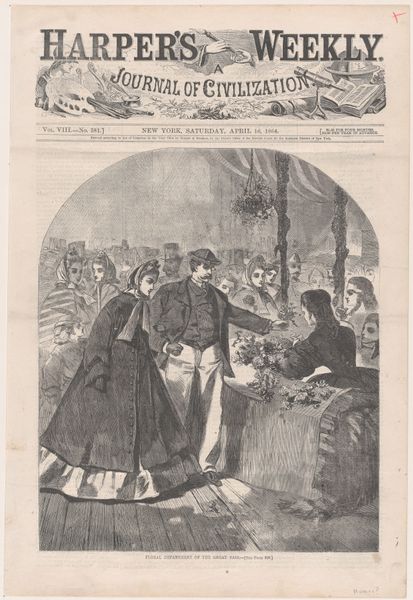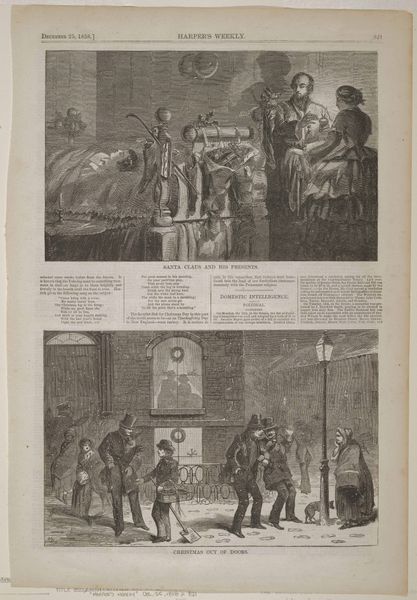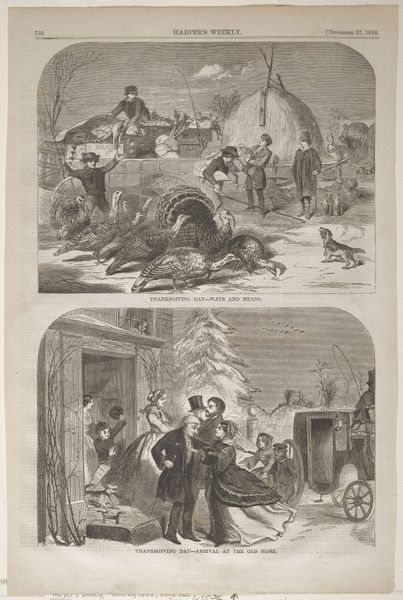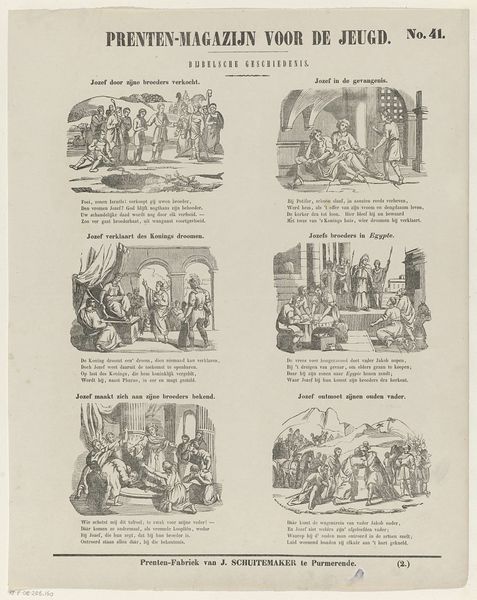
print, woodblock-print, woodcut, wood-engraving, engraving
#
portrait
#
narrative-art
# print
#
landscape
#
charcoal drawing
#
woodblock-print
#
woodcut
#
united-states
#
genre-painting
#
wood-engraving
#
engraving
#
realism
Dimensions: 5 7/8 x 9 1/8 in. (14.9 x 23.2 cm)
Copyright: Public Domain
Curator: Ah, there's a kind of subdued excitement in this image, don’t you think? It reminds me of Christmases long ago when the anticipation was as sweet as the day itself. Editor: Absolutely. Looking at "Christmas -- Gathering Evergreens", a wood engraving created by Winslow Homer in 1858, I immediately notice the sharp contrast between the figures in the forest collecting their tree and the lower scene depicting the festive Christmas celebration indoors. This stark division speaks to the era’s socio-economic stratification. Curator: That's an interesting observation. It almost feels like a before-and-after shot of Christmas. I love the way the artist captures the hardy effort required for such seemingly simple celebrations back then, compared to today's mass-produced merriment. I'd bet the scent of those evergreens was unforgettable! Editor: Precisely! The print highlights a rural experience of Christmas, perhaps inaccessible for many, especially people of color who were unfree or the urban poor whose labor sustained that Christmas. There's a romanticism, yes, but it's critical to unpack whose stories were being told and who remained invisible. Curator: I see your point. I’m so drawn to the raw, honest style, those rugged figures felling the tree juxtaposed against the children playing and dancing at a party. One of life’s stark beautiful dualities on a winter’s day! Editor: And in that duality lies the narrative—of labor and leisure, of nature subdued and culture celebrated. Consider the environmental implications, even then: the cutting down of trees for fleeting domestic spectacle reflects ongoing issues around land use and privilege. Curator: I must say I see now a new perspective. Makes you consider how much a single image holds… the choices of what’s seen, and what’s left unseen. Thanks for widening the view. Editor: It's through that constant interrogation—asking ourselves "who benefits?" "who is excluded?" "at what cost?"—that we start to grasp the rich, layered complexities of what we consider 'classic' art. It transforms the viewing experience completely.
Comments
No comments
Be the first to comment and join the conversation on the ultimate creative platform.
